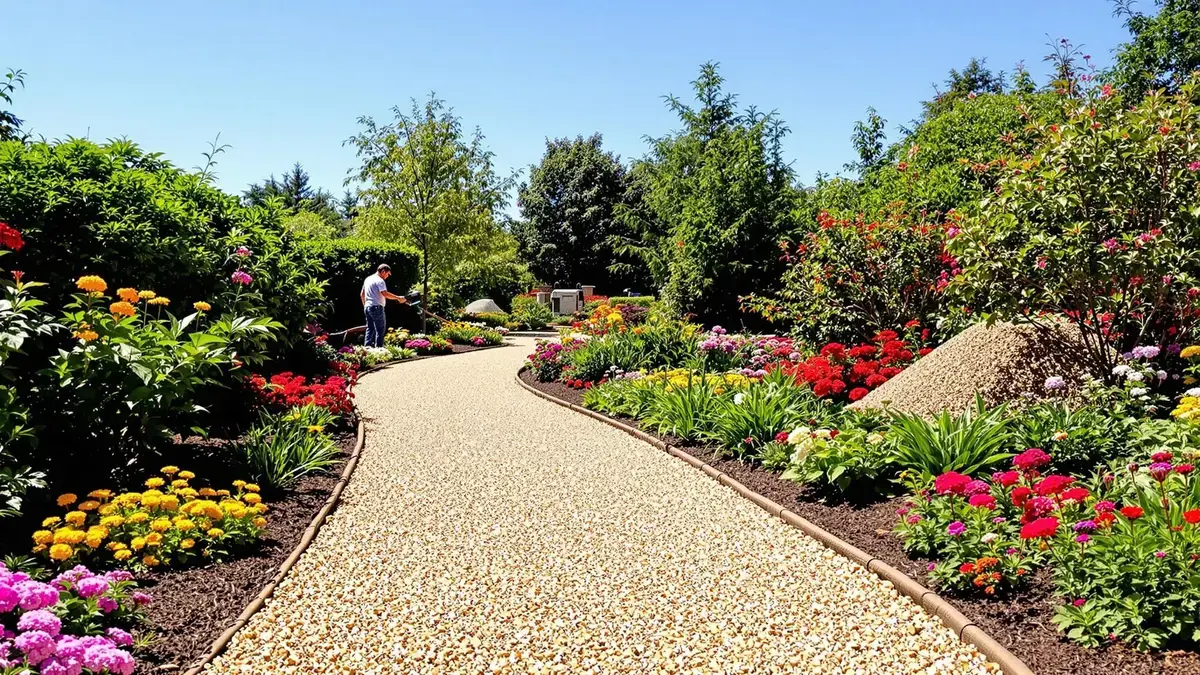In the quest for a flawless garden, landscapers have well-kept secrets to prevent weeds. Gravel pathways, often besieged by these unwanted plants, require effective solutions. While manual weeding and chemical products are not sustainable, installing a geotextile fabric represents an innovative method, blocking weed growth while allowing for proper drainage. With a 90% reduction in weeds, this technique ensures attractive and easy-to-maintain outdoor spaces.
Key Information
- Gravel pathways are often overrun by weeds.
- Traditional solutions are ineffective, requiring manual weeding or the use of chemical products.
- The geotextile fabric trick blocks weeds while allowing for proper drainage.
- For increased durability, combine the fabric with a gravel stabilizer for a maintenance-free garden.
Gravel pathways are often recognized for their beauty and practicality, but they are also prone to invasions of weeds. These unwanted plants can quickly transform a tidy garden into a chaotic space. Traditional weed control typically involves manual weeding or using chemical products, but these methods often prove ineffective in the long run. Landscapers have therefore developed more effective tricks to maintain a pristine garden.
Geotextile Fabric Trick
One innovative method involves using geotextile fabric. This material plays a crucial role in blocking weed growth while allowing for adequate drainage of water. To install it, it’s essential to prepare the soil thoroughly. Once the ground is ready, the geotextile fabric should be laid down and properly secured before adding a layer of gravel at least 5 cm thick. This technique has proven highly effective, allowing for a reduction of up to 90% in weeds.
Advanced Method: Gravel Stabilizer
To go even further, landscapers recommend using a gravel stabilizer. This device, made of polypropylene, features a honeycomb structure that prevents the accumulation of soil and debris while promoting a durable and uncluttered gravel surface. This approach not only keeps the pathway clean but also preserves the beauty of the garden, making daily maintenance much easier.
Ecological Weeding of Existing Weeds
If unwanted weeds are already present, there are several eco-friendly methods to eliminate them. Using white vinegar is a well-known strategy, as it has the ability to dry out weeds. Boiling water, on the other hand, destroys plant cells shortly after application. Other solutions include baking soda, which alters the soil’s pH, or table salt, which burns the roots of plants, although it is essential to use it sparingly to avoid damaging the surrounding soil.
When is the best time to plant tomatoes for a fruitful harvest?
Combining Geotextile Fabric and Gravel Stabilizer
To ensure a pathway that is both clean and durable, combining geotextile fabric and gravel stabilizer is undoubtedly the most effective method. Not only does this approach minimize regular maintenance, but it also ensures an aesthetic result with little effort for several years. The fusion of these tried-and-true techniques offers a long-term solution to the nuisances caused by weeds.
By adopting these proven techniques, it is possible to transform a garden while preserving its beauty and harmony. Thus, saying goodbye to weeds becomes a concrete reality, allowing everyone to enjoy a pleasant, aesthetic, and hassle-free outdoor space.













